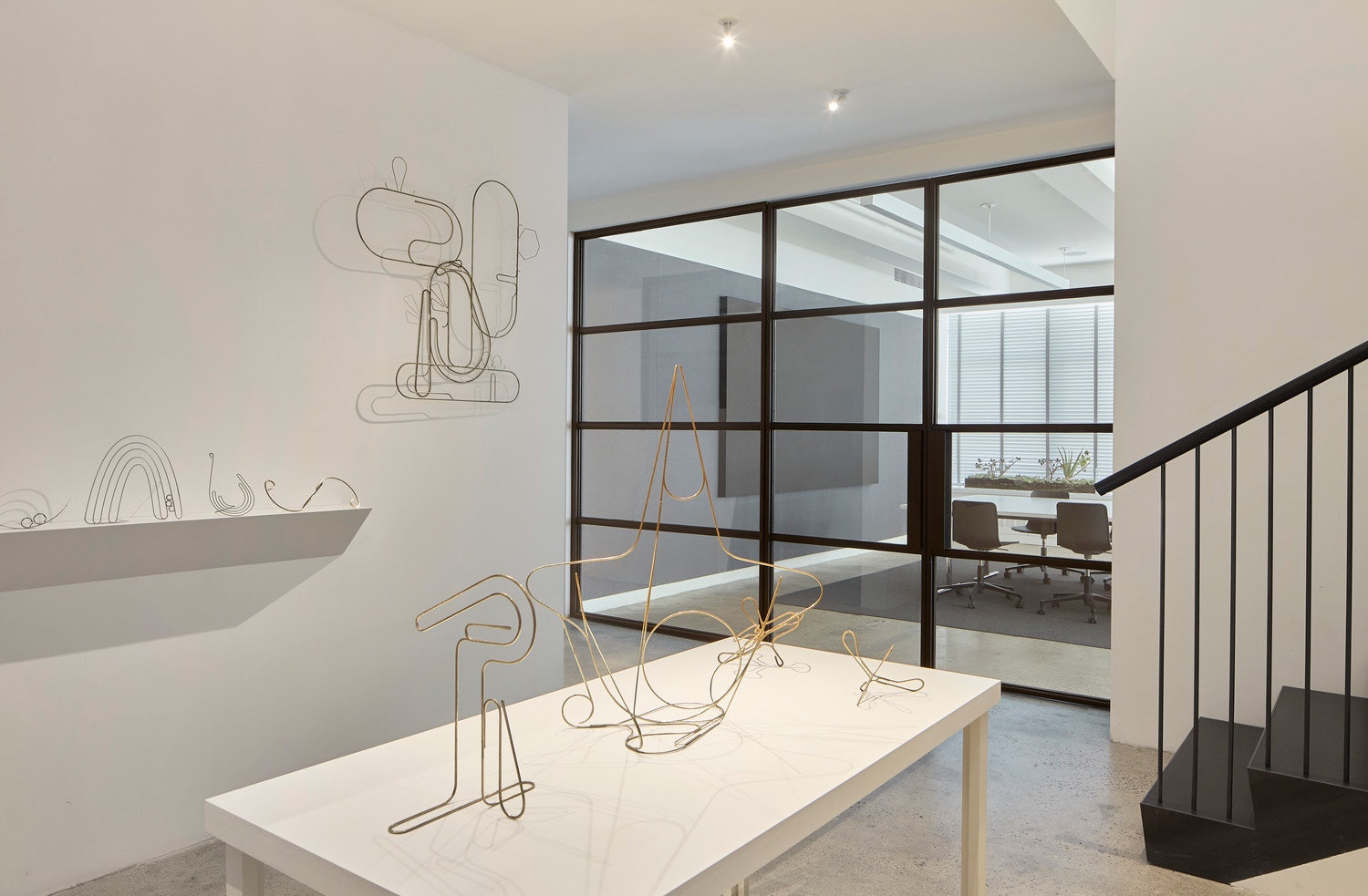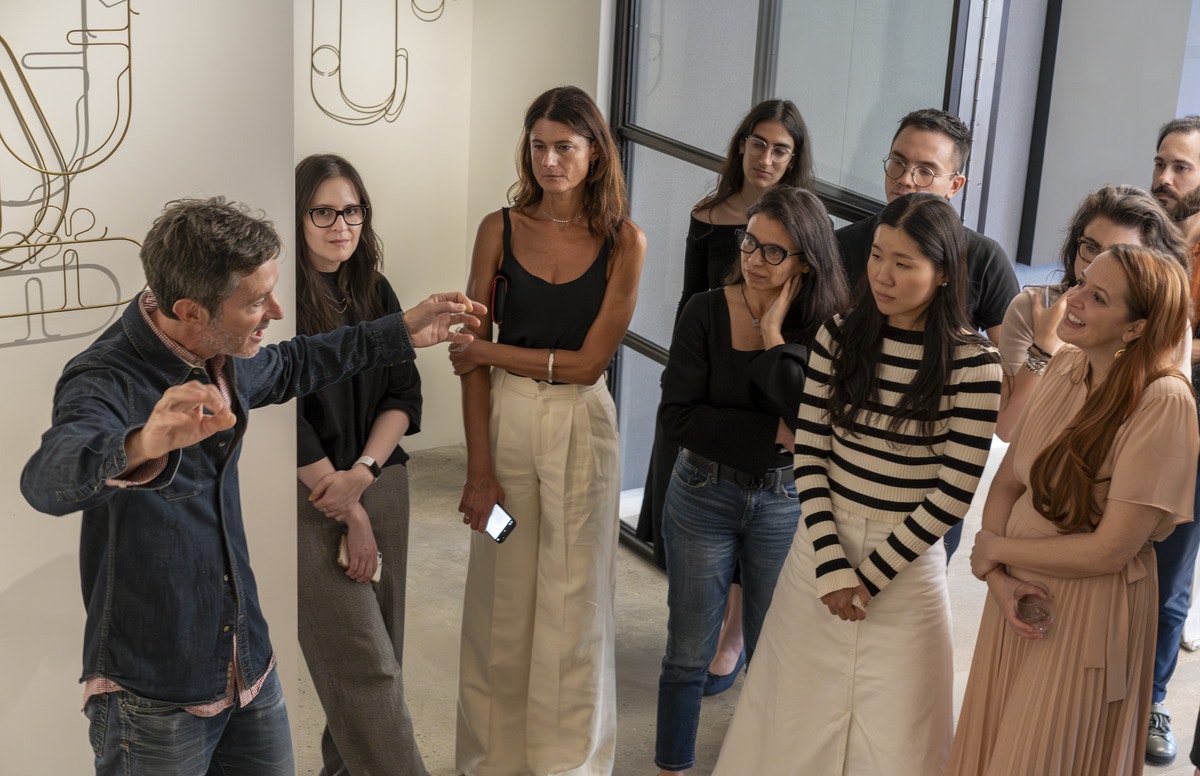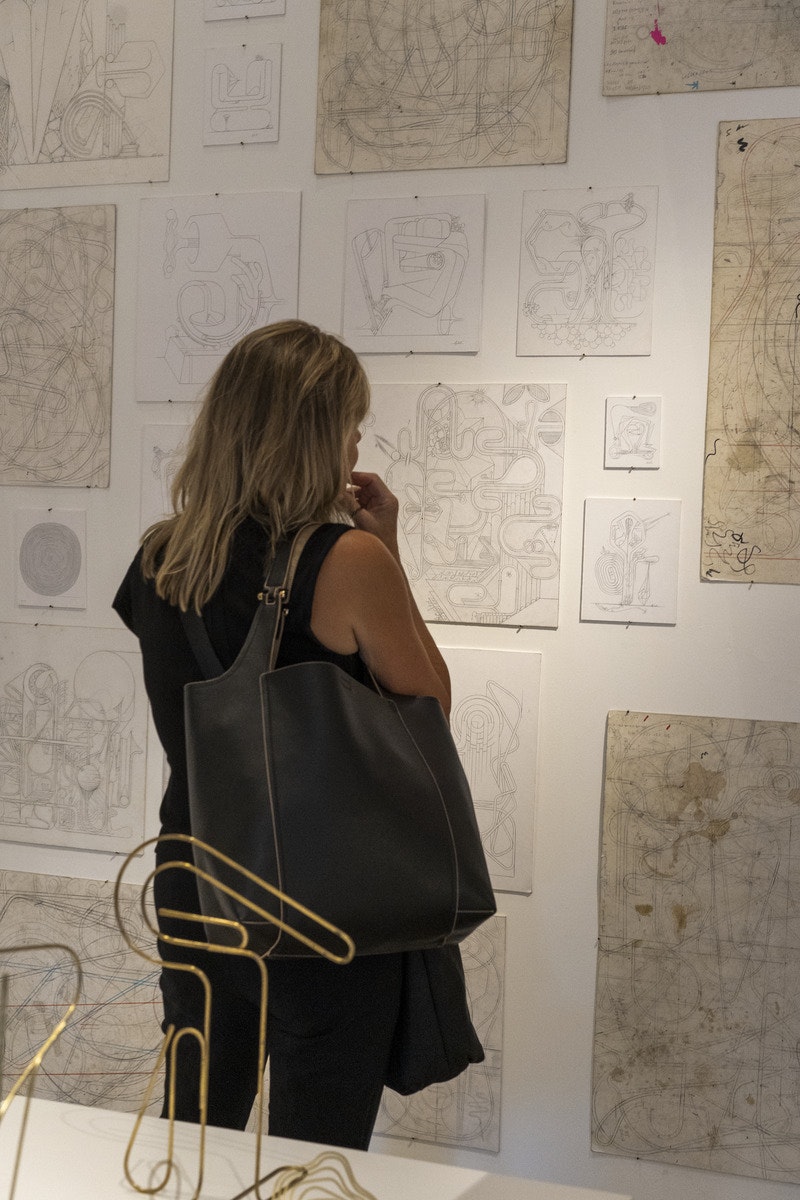Rodger Stevens

Scenes from the Synaptic Gap is a collection of hand-worked wire sculptures by American artist Rodger Stevens, ranging in scale from large, wall-mounted pieces to delicate palm-size objects. Looping, confident forms in hammered and hand-riveted brass, silver, steel, and iron are fashioned using simple, traditional metalworking techniques to create sweeping contours in artworks that search for poise and balance.
Using a personal language of open and circuitous forms, his sculptures mount on walls and ceilings, rest on various surfaces, and are sometimes even wearable. Tautly twisted metal fastenings connect open volumes to create elegant artworks with surprisingly minimal means and materials. His sculptures often suggest drawings in space and are meticulously planned through an intensive process of mapping forms in working sketches, articulating spatial volumes and internal shifts in scale.
Stevens' sculptures begin by processing personal experiences and contain hidden narratives. His restless search for meaning generates images, ideograms, and pictorial stand-ins as components of deeply personal events. Confusion becomes a knot, perseverance a racetrack, exertion a boulder, anticipation an asymptote, and all the twisting, bending, and shaping of his materials works toward meaningful connection in the synaptic gap.




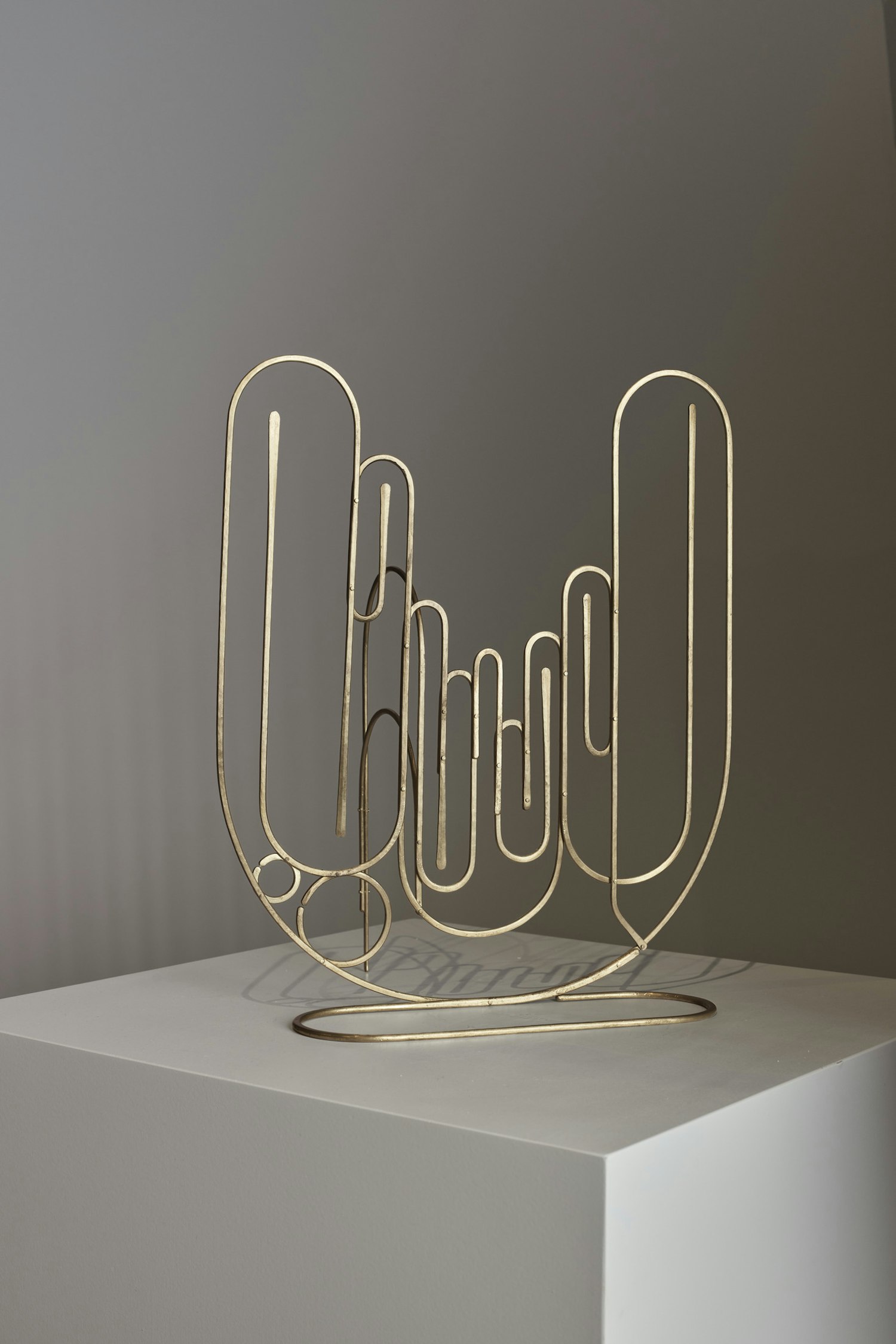
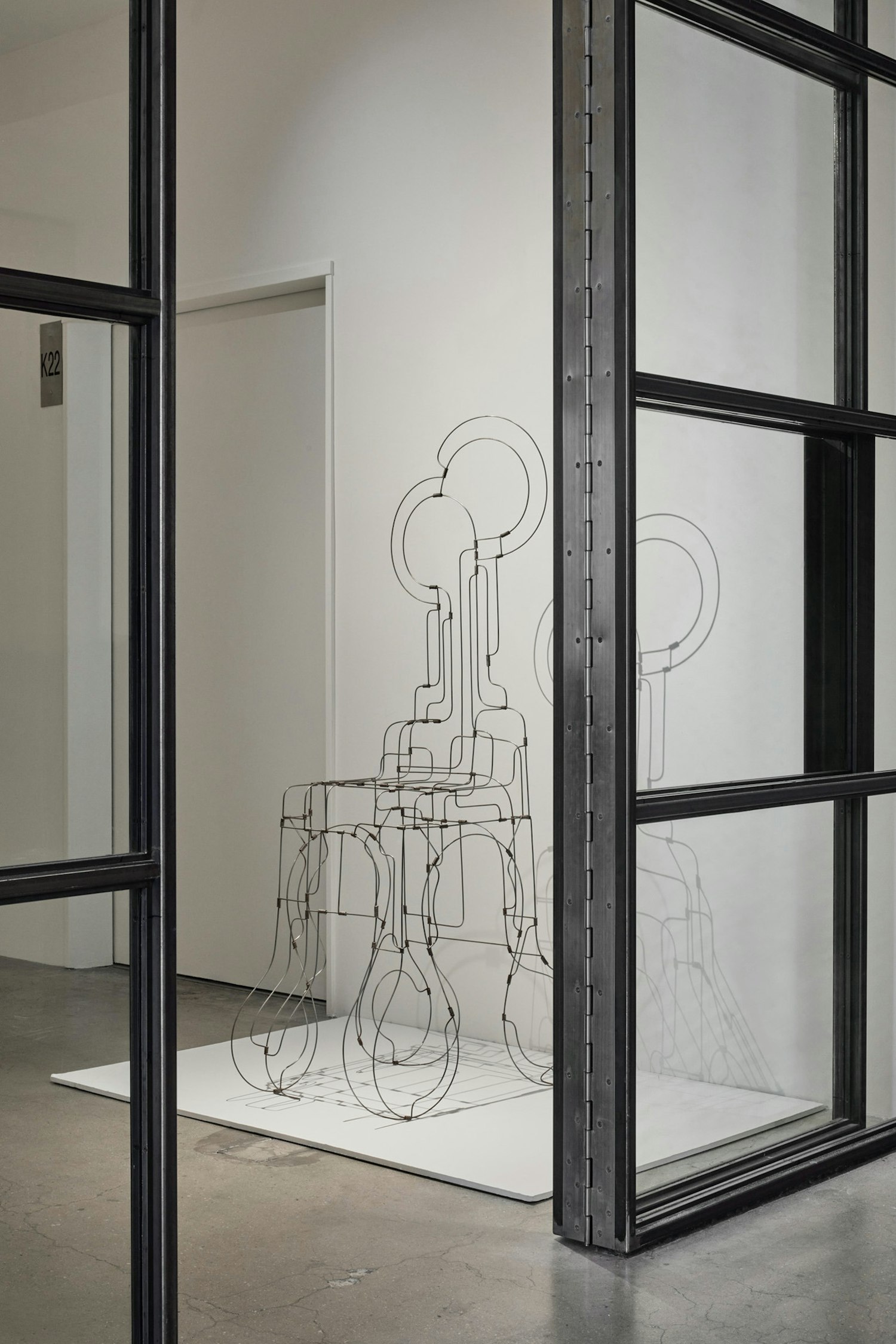


Rodger Stevens is an American artist and sculptor whose principal medium is wire. Born in Brooklyn, New York, Rodger studied at the Parsons School of Design and the School of Visual Arts in New York City and is now an internationally exhibited artist with work in numerous private and institutional collections. His work, while abstract in nature, is firmly rooted in a deeply personal narrative and draws heavily upon literature, language, mathematics, human physiology, and day-to-day experience. His hand-crafted sculptural works and wearable pieces embody carefully wrought stories and ideas that are articulated through composition and form. His attention to line and narrative has led to a body of works that operates like a language of glyphs: aesthetically rich in appearance and conceptually rewarding upon closer inspection.
Opening Night
